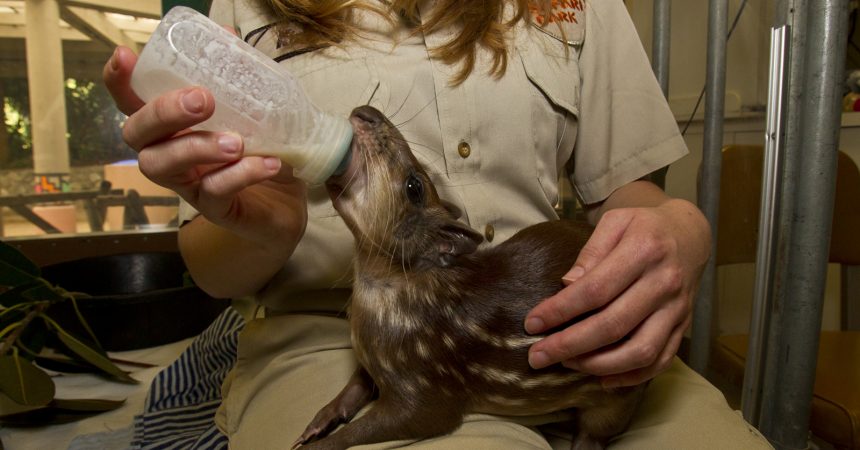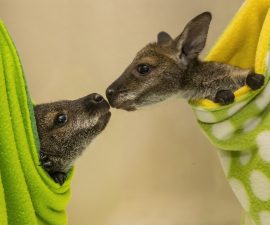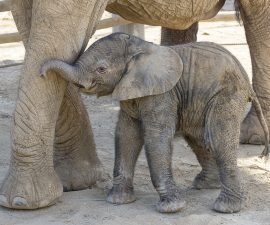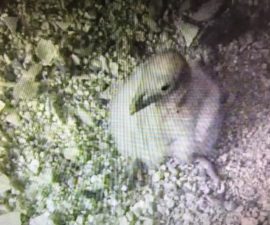It’s barely after dawn and the day begins with a load of laundry, followed by taking out the bottles of formula and setting them to warm. Then it’s time to check on the little ones and get them out of bed. Sounds like many houses with young children, right? Well, it’s also a peek into the daily routine at the Ione and Paul Harter Animal Care Center at the Safari Park, where the keepers, like Army soldiers, do more by 9 a.m. than most people do all day. It’s hard work, but it’s also a labor of love.
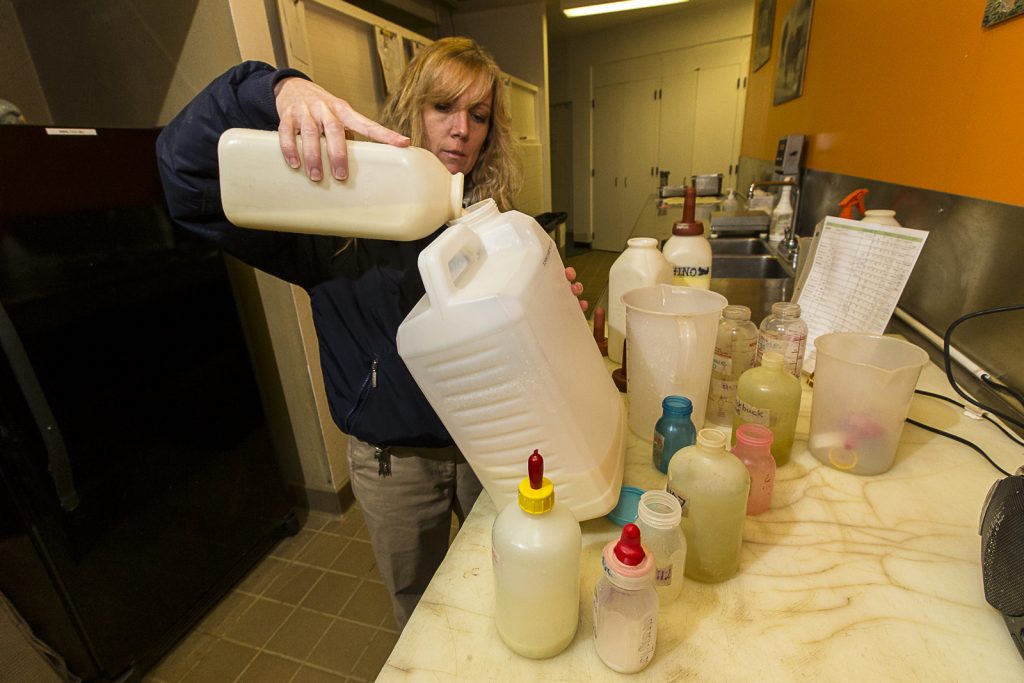
Caring for baby mammals requires bottles of many sizes, and lots of different formulas.
“They are so dependent on us and we have to be organized to make sure each animal gets what it needs,” explains keeper Ian Chatfield. Meeting each individual animal’s requirements can be tricky. And there’s not one formula solution—there are many. “Each species eats a different formula, measured and mixed for each animal,” Ian says. This requires a variety of skills including one many people may not expect when talking about animal care, notes lead keeper Lissa McCaffree. “This is where the math comes in,” she says. “Remember when teachers said we’d need math? They were right—formula mix and water ratios need to be correct. And we use metric measurements!” Other factors must be taken into account, such as how much the animal has eaten previously, its stomach capacity, general physical condition, and age. Do these calculations add up to a solution? It gets keepers closer. As Ian points out, the bottles make a big difference, too.
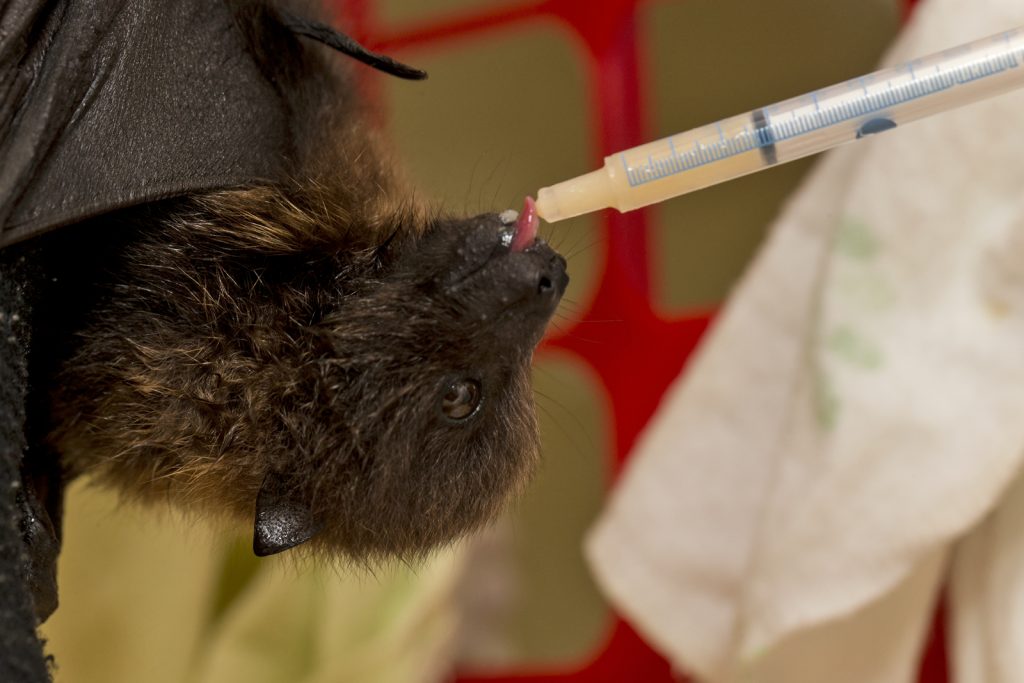
How to “bottle” feed a baby Rodrigues fruit bat.
“Each species requires a certain type of nipple on the bottle,” he explains. “If the wrong one is put on, the animal might not eat, and we might think there is something medically wrong and call vet services. We don’t want to subject a youngster to the unnecessary stress of an exam just because it didn’t like the nipple on its bottle.”
Keepers are also careful to separate the eating implements of herbivore animals from those of carnivores, and there’s a separate protocol for any sick babies. Guidelines are in place for the sterilization and storage of all “kitchen” ware. Once the meals are ready, keepers split up feeding duties and make sure everyone has breakfast. For species that will grow large, such as gemsbok, keepers put the bottles in racks so that the youngsters don’t come to associate people with food. A fully grown, 400-pound animal trying to cajole a snack can be unwittingly dangerous—they don’t know how big they are!
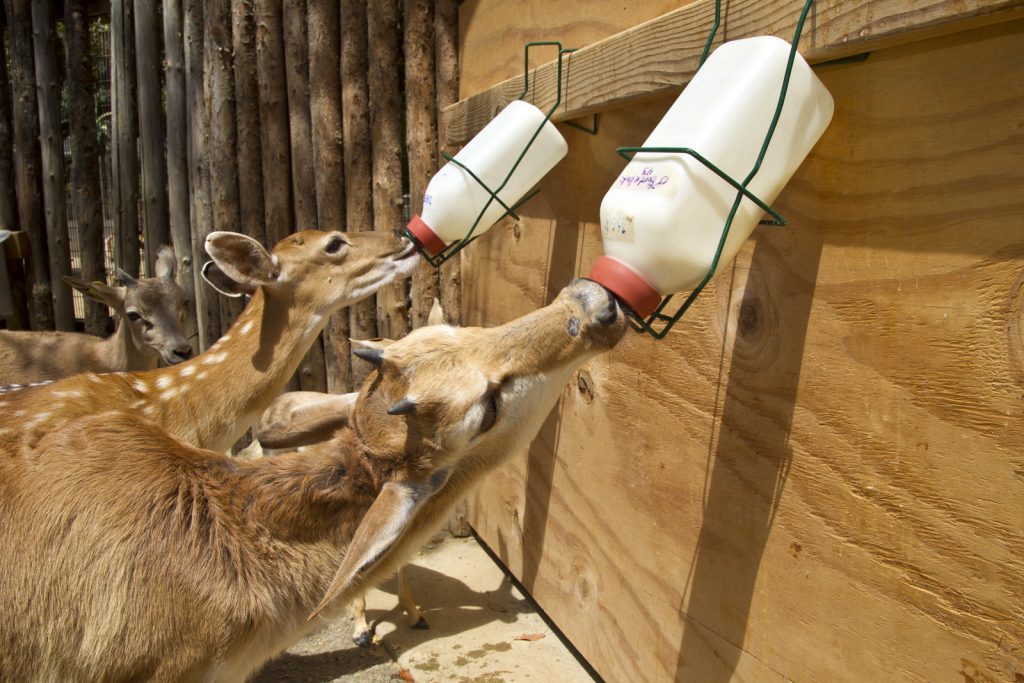
Two ungulates enjoy “bottle service” while others wait their turn (and their own bottles).
Keepers consult the logbook from the day before for any notes about new developments that may have occurred overnight. Then it’s time to muck stalls and rake corrals— it’s not glamorous, but it matters. “Clean living areas are healthy living areas,” says keeper Mandi Makie. “And we make them nice and comfortable with hay or other bedding.”
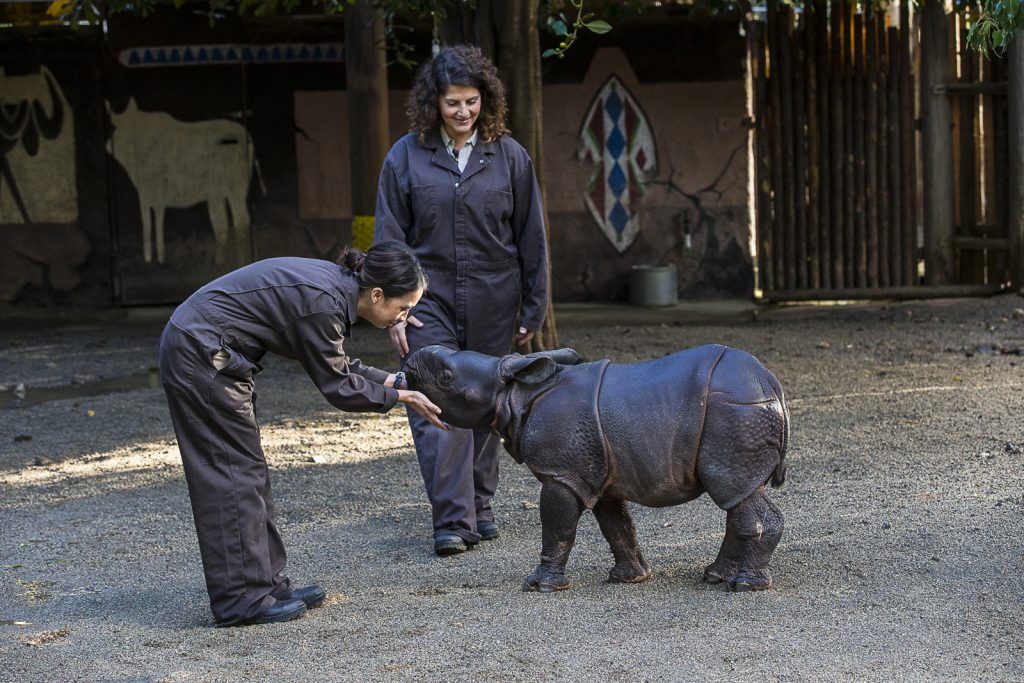
Beyond the Bottle: Meeting each youngster’s tactile and social needs—like this greater one-horned rhino calf—is a vital part of an ACC keeper’s day.
Once housekeeping is done, bottles are prepared for the late crew, who will return the favor by preparing bottles for the next day’s early staff. “We’re a team,” Lissa says. “We help each other get things done.” And quite often, the “things” that need doing change quickly. There is no such thing as a typical day, with vaccinations being administered one day, and emergency intakes on another. “If an animal gives birth in the field exhibits and the baby doesn’t thrive, sometimes we take it in here to give it the best chance of survival,” Lissa says. “We hope each one can return to its mother. But if not, we raise it here.” She notes that keepers at the ACC have a standard for real success. “When one of our babies goes back to the field and reproduces, we know our job is done,” she says. And this job is done every day. Starting barely after dawn.
Peggy Scott is an associate editor for San Diego Zoo Global. Read her previous blog, Spot Check: an Update on the Park’s Cheetah Cub.

